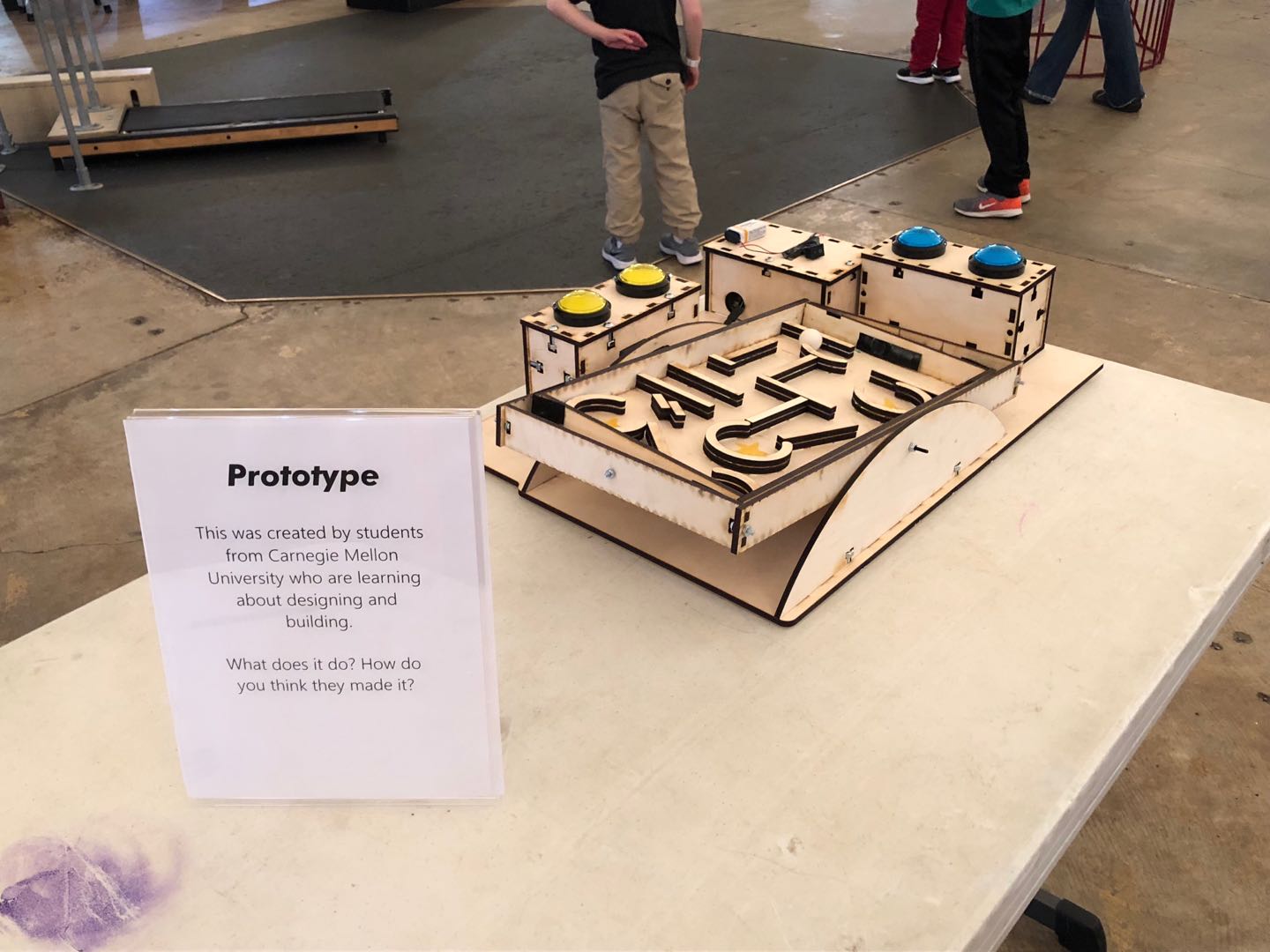Analysis
- Technical Limitations: The only technical limitation we encounter during the trip to the children’s museum is that our battery cannot last for the entire visiting session and we had to swap the battery in the middle of the visit, which interrupted user experience.
- Moment of Delight: The graphical interface of the game involves a starting position and several goals (marked with yellow stars). Since this is a collaborative game, the users (both children and adults) will have a sensor of achievement after moving the ball to a certain goal by working together. This process involves getting familiar with the controller, establishing a mutual goal, and operating the machine to reach the goal, which is not an easy task for children, or even adults, to do within a short period of time. However, the efforts of figuring out the goal and playing the game with a partner highlight the value of the reward. We do believe that we can add more visual or sound features to the game to further enhance this sense of achievement after the users successfully achieve a goal.
- Surprising Interactions: Since the game involves two players working together, it is almost impossible to reach any goal without the players establishing a mutual goal. This requirement of the game led to a very surprising result: the players were more likely to accomplish the goal if either the two players were very easy to collaborate (one twin brothers easily got to all the goals with excellent communication), or a strong leadership presented in one of the players (a parent/child pair or one of the child is really bossy). We did not expect to observe the second play mode until we did see it.
- Additional or different interactions: Currently the game has human/machine playing mode, which allows the user to play the game by controlling only one degree of freedom, with the other degree of freedom controlled by the machine. However, we did observe that this human/machine play mode confused several children/adults since it was difficult for them to recognize how the machine responded to their control inputs. We also think it will be cool if we can have two of these machines side by side for two pairs of users to compete with each other.
- How does the visit change our vision for a fully realized project: Our project was very close to a fully realized prototype at the last visit. From our feedback, we think it would be great if we could add more response to the users after they achieve goals. We also think that the human/machine mode might not be a good idea for a short exhibit game for children since the random motion of the machine does not help users to understand the game quickly.
- Video Clips and Photos:
 Revision Plan
Revision Plan
- Resolve known technical limitations:
We should bring more battery to the museum.
2. How does the fundamental experience need to be modified?
We need to change the criteria to turn to kid-in-control mode. Previously, once kids press a button, only the axis align with that button will be in control. The other axis would keep the automatical movement. This confused a lot of kids whether they were in control or not. We will change this in a way that once a button is pressed, both axis will be in control of kids.
We also need to change the game to an open-ended game, which does not have a specific “start”. In this way, children can just start in the middle without start the game all over again.
3. What new capability will you add beyond the initial objectives?
We will add more sound or light effect to confirm kids are they are rewarded when they move the ball to the stars. In order for the arduino to tell whether teh bal is atone start, we will use an IR proximity sensor to sense teh existence of the ball at stars.
Leave a Reply
You must be logged in to post a comment.